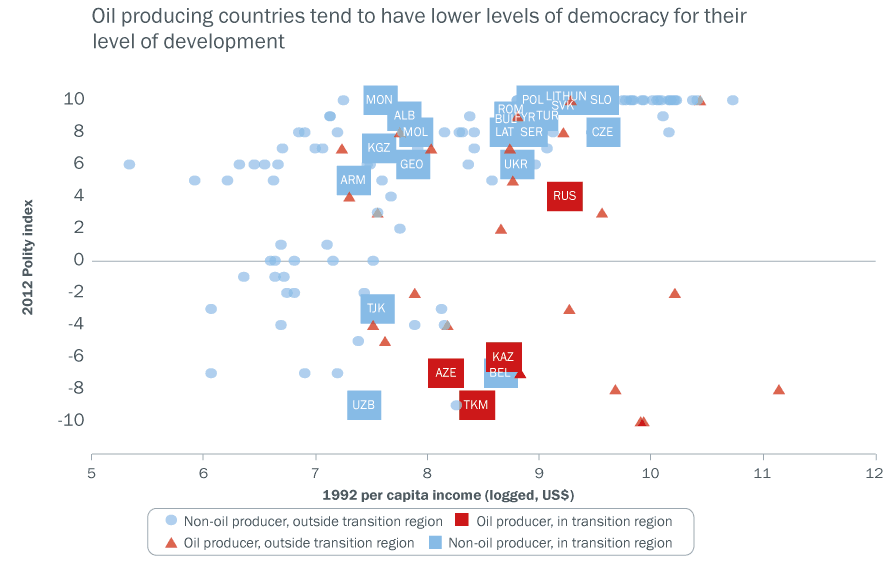Markets and democracy
Natural resource rents
- Details
- Markets and democracy
Table 2.2 also shows that, worldwide, a country’s level of natural resource rents – defined as the share of GDP that stems from natural resource extraction – is a significant negative predictor of levels of democracy five years ahead. In the transition region the effect is only detectable when the dependent variable is an improvement in the Polity2 score for democracy (Max5Polity). This means that natural resource rents reduce the chances of a country becoming more democratic over the five-year horizon.
The negative impact of natural resource rents on the probability of an improvement in democracy is about twice as large in the transition region as it is in the rest of the world. The regressions do not find that natural resources trigger declines in democracy, reflecting the fact that few countries in the transition region that are rich in natural resources have seen declines in their levels of democracy. Most have stayed at low levels, and some have improved.
Chart 2.4 illustrates the potential role of natural resource rents in impeding democracy. The chart plots per capita GDP in 1992 against democracy in 2012 in oil producing countries (red rectangles) and non-oil producers (blue rectangles) in the transition region, as well as oil producers (red triangles) and non-oil producers (blue dots) outside the transition region. Countries in the transition region which have high natural resource rents are significantly less democratic than their level of income would otherwise predict.














